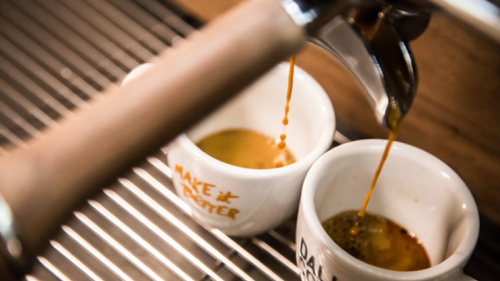Appling WBC Rules to Your Coffee Shop
May 22, 2018
The World Barista Championship is a groundbreaking competition that started in the year 2000 and now attracts competitors from more than 60 countries, who vie to become the best barista in the world.Since the first championship in Monte Carlo, the rules have evolved and every year the competitor performances continue to push the boundaries, allowing us to predict—or at least imagine—what the next trends in the industry might be.
One thing I am positive about: the rules and regulations matter. What’s more, they’re easy to adapt to your very own coffee shop, helping you to ensure that your practices at work are world class.
Let’s break some of the rules down for you in two parts; the first chapter includes the technical evaluation.
This is where the barista’s skills and technical proficiency are evaluated. There are a few basic aspects a competition judge looks for in order to give a competitor a score of ‘excellent’: Does the barista clean the basket before dosing the coffee? Flush the group head before inserting the portafilter? Insert and immediately start the brew? Clean the portafilter before inserting it into the group head? A barista must do all of these things to achieve an excellent score. These rules guarantee that the barista follows basic protocols to ensure the quality of the espresso shot.
Another very important topic concerns wasted coffee while grinding and dosing the coffee. The WBC standard says that more than 5 grams of waste for drinks category, (2 extracted shots, 4 beverages), is unacceptable. To obtain an excellent score, your waste needs to be under 1 gram per category. I advise that you weigh your total waste after a couple of shots. If the waste totals 2 grams per double shot,it means that you are losing 200g of coffee to make 100 shots. This level of waste is not sustainable or professional and makes for an incredibly inefficient coffee shop.
Next, let’s look at consistency in dosing and tamping. This ruleset covers the ability to always dose the same amount of coffee for every extraction and to tamp the coffee in a levelled and consistent way. It is important to ensure the same quality throughout the day (if you are using an on-demand grinder, check the variance between shots) so that the coffees you are making provide a similar taste experience for every customer. The key here is consistency. Best practice dictates that an espresso dosing recipe be followed (or at least discussed and confirmed with the entire staff), and that baristas should be tamping flat and with adequate pressure. A poorly tamped coffee will make for an unbalanced extraction and change the espresso completely, for the worse.
One of most important parts of the technical evaluation concerns station management and clean working area. Managing your station is about knowing your equipment—basically the ability to use your espresso machine, grinder, and accessories correctly. How well do you know your espresso machine? What about your grinder? Are you in control of your tools? Do you know how to use them properly? Do you know where everything is? Can you move around your station in a fluid way and pay attention to all your actions behind the counter? Are you being clean or at least cleaning surfaces after you finish doing something? All those questions matter. This will make you a better, more skillful coffee professional and that’s what judges are looking for in a champion. Nobody likes a messy station, and it’s way easier to control everything once you know your station and know how to use it, neatly and efficiently.
When you start to dedicate a little bit more time to these technical areas, the quality of your café management or competition routine will increase exponentially.
Implement consistency and count on Dalla Corte to #MakeItBetter

Latest news
THIRD WAVE COFFEE: THE NEW ERA OF QUALITY COFFEE
Feb 18, 2025









